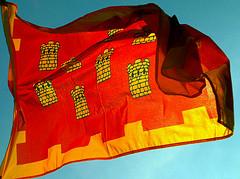Technology
 There are different crops that can be used to develop silages, as well as by-products of fish and other animals making it possible to make efficient use of the production, we then relate a number of examples of this, with its technology for silage. Types of silages. Sugarcane silage: bud and harvest residues can be used. The cane is a type of farming that has advantages over others since this can remain in the field until you need without losing its nutritional value. According to Necenen 1990, world production of buds of sugarcane is estimated at 60 million t year, of which only 15% is used in animal feed systems, so it is easy to deduce that still is not given the proper use to this so useful by-product, due to the additional cost of storage, which is avoided if this Bud is used for the elaboration of silages. Technology: Chopped particles size cannot be greater than 20 – 30 mm on average.
There are different crops that can be used to develop silages, as well as by-products of fish and other animals making it possible to make efficient use of the production, we then relate a number of examples of this, with its technology for silage. Types of silages. Sugarcane silage: bud and harvest residues can be used. The cane is a type of farming that has advantages over others since this can remain in the field until you need without losing its nutritional value. According to Necenen 1990, world production of buds of sugarcane is estimated at 60 million t year, of which only 15% is used in animal feed systems, so it is easy to deduce that still is not given the proper use to this so useful by-product, due to the additional cost of storage, which is avoided if this Bud is used for the elaboration of silages. Technology: Chopped particles size cannot be greater than 20 – 30 mm on average.
During or after this tamping it should raise the temperature of 45 C. As additive you should be applied by each 0.002 Kg of chopped sugarcane a mixture composed by urea(0.00098%), salt mineral(0.00044%), sodio(0.00014% sulfate) and Zeolita(0.00044%), spread it evenly over layers of cane ground not greater than 10 cm thick. Fish silage: the edible fish yield is only 40%, so per T of fish 0.6T are obtained to be used as animal feed 4. Technology: you can use waste sliced or mashed before adding organic acids and minerals can also be mixed with carbohydrates like Yucca, sweet potato, honey, where the presence of acids from fermentation of carbohydrates reduces the pH thus achieving inhibit the development of microbes 5. Silage acid. Silage of Pope. Corn silage: the procedure is very similar to the cane but with the only difference is that the time of exposure to the Sun should be greater when he joins a legume.
